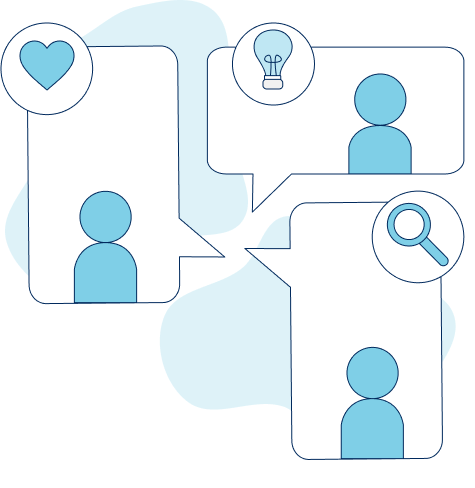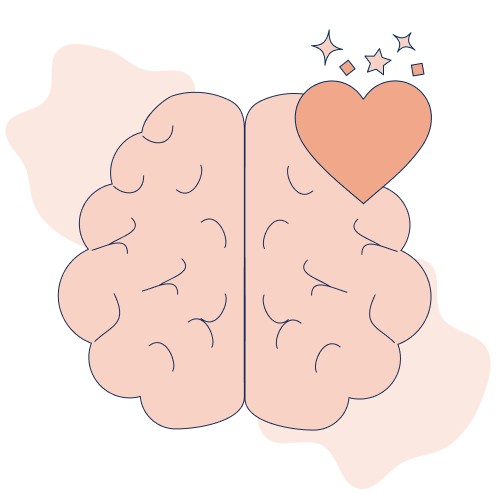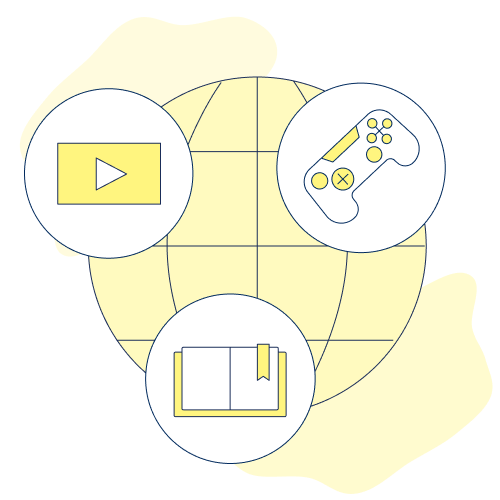At the Innovation Hub, we use storytelling as part of our design thinking approach to create meaningful, impactful messages. Ava reflects on the brain science of storytelling through its connection to her undergraduate studies in Cognitive Science and Psychology.
Written by Ava Hawkins, Blog Editor & Digital Content Writer, Honours Bachelor of Science, Cognitive Science & Psychology
The Importance of Storytelling
Have you ever watched a film where the protagonist takes a risk, uncertain of the outcome, and the apprehension builds in your chest—until the character succeeds and you sag with relief, reflexively grinning at the success? Or, have you ever read a novel where your favorite character faces hardship and you feel their emotions as if they were your own? These are perfectly normal reactions, and good ones too, because they mean you are empathizing with the characters. That is one of the many powers of storytelling: through stories, we learn, experience, and connect with others.
At the iHub, we use empathy in storytelling as a large part of the design thinking approach; we aim to present our project findings through storytelling instead of purely quantified data because we want the information to stick with our audience in meaningful ways. We use storytelling in our presentations, interviews, and even ice breakers to help team members connect with others and learn from their experiences.
Since the beginning of language and communication, stories have shaped the way we think about the world, and how we interpret novel situations. Throughout my studies, I found that stories teach us empathy, life lessons, survival skills, and emotional understanding. Storytelling shows up in everyone’s life differently, and after working at the Innovation Hub, I discovered one way storytelling appears in mine: through my degree in Cognitive Science and Psychology.
The Brain Science of Storytelling
Storytelling is in every lesson plan my teachers made for class, every reading, and every paper I wrote. Even my first-year calculus class had questions with a narrative structure, allowing storytelling to make its way into my exams and assignments. With so much exposure to storytelling, and my curiosity about the brain, I started researching what happens to us when exposed to stories. Why is storytelling so powerful at conveying meaning?
I learned that in 2010, researchers at Princeton found coupled activity in the brains of storytellers and their listeners—the listeners’ brain activity not only mirrored that of the speaker, but they even started to anticipate what would happen next. I learned that this phenomenon is known as neural coupling, and some researchers believe it may help us understand how and why we empathize with others. Stories can change our brain chemistry, releasing neurochemicals such as oxytocin, which enhances our sense of empathy for others. Our brains seem to be wired for empathy and constantly search for meaning, which may be part of the reason we are so drawn to stories, and why they impact us so strongly.
Stories may also help people to connect emotionally, a concept psychologists call “narrative transport.” In my research, I found that our brains respond to a story’s events as if they were happening to us, the listeners. We take on characters’ emotions as our own, and we look for ways to understand situations and connect with others. Stories are useful to us, our social groups, and even our survival because they allow us to picture and prepare for what to do in novel situations without having to experience them firsthand.
Capturing People’s Hearts through their Brains
We are naturally drawn to stories, which makes them a great tool for communication and that is why they are everywhere. Paul J. Zak, the director of the Center of Neuroeconomics Studies at Claremont Graduate University, may have said it best: “When you want to motivate, persuade, or be remembered, start with a story… It will capture people’s hearts – by first attracting their brains.”
One of the main reasons we use storytelling is to communicate information in meaningful ways. We use the techniques of storytelling to engage people’s feelings, allowing them to resonate with the material and increase its impact. As Zak says, to engage people’s emotions, first capture the attention of the brain and through my research, I discovered that storytelling does just that.
Finding Storytelling Everywhere
Storytelling shows up in nearly every facet of life, but we don’t always notice it. A good place to start looking for storytelling is in your academics or hobbies: think about why you really like the TV show you’re binging or the book you’re devouring in your free time. Consider how your teachers use storytelling to explain a concept or how you use it to reach your audience in presentations or essays.
Once you start seeing where storytelling appears in your life, whether it’s your academics, your conversations with friends, your hobbies, and more, you can start to utilize them, too. I would encourage readers to look for storytelling and consider how to use it in your next project or presentation.
To learn more about the brain science of storytelling, visit these links:
- The Neuroscience of Storytelling
- Why Your Brain Loves Good Storytelling
- The Mirror Neuron System
- Neurophysiological mechanisms underlying the understanding and imitation of action
- The Storytelling Brain: How Neuroscience Stories Help Bridge the Gap between Research and Society
References
Ariel Group. (2020, January 16). Why storytelling works: The science. https://www.arielgroup.com/why-storytelling-works-the-science/
McFalls, E. (2021, September 30). The neuroscience of storytelling. NeuroLeadership Institute. https://neuroleadership.com/your-brain-at-work/the-neuroscience-of-storytelling/
Stephens, G. J., Hasson, U., & Silbert, L. J. (2010, July 26). Speaker–listener neural coupling underlies successful communication … PNAS. https://www.pnas.org/doi/10.1073/pnas.1008662107
The Neuroscience and craft of storytelling. The Storytelling Business. (2023, August 11). https://thestorytelling.biz/how-to-leverage-neuroscience-to-tell-engaging-stories/#:~:text=The%20neuroscience%20of%20stories&text=Zak’s%20research%20has%20shown%20that,to%20leave%20us%20feeling%20good.
Zak, P. J. (2014, November 5). Why your brain loves good storytelling. Harvard Business Review. https://hbr.org/2014/10/why-your-brain-loves-good-storytelling





0 comments on “The Brain Science of Storytelling: Finding the Connection Between Storytelling and Academics ”